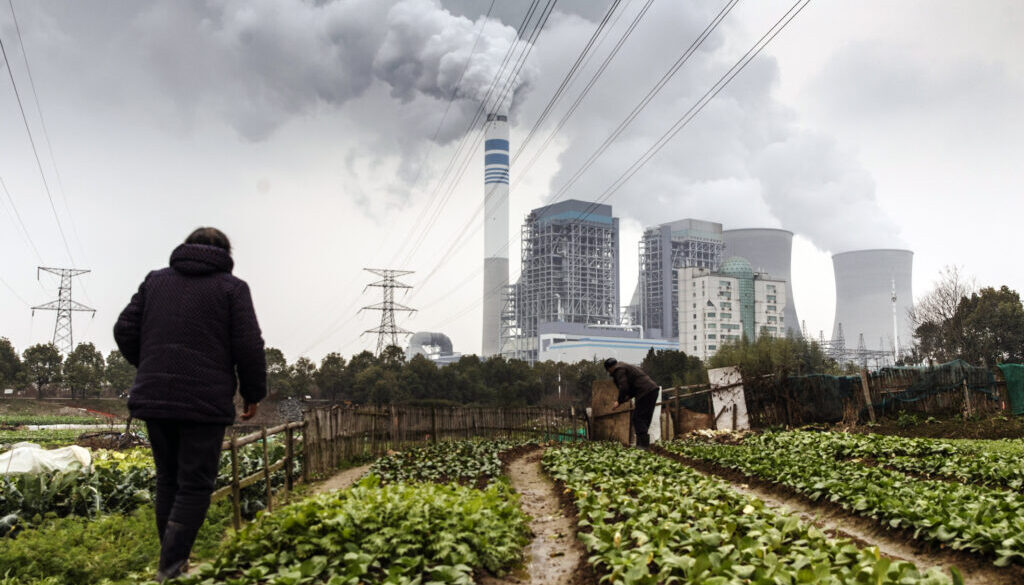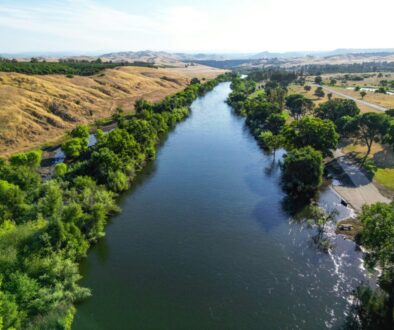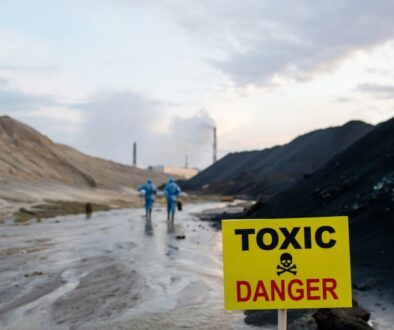Postcard from California: Carbon capture won’t solve climate crisis
 Four miles from my house, a Silicon Valley company wants to drill an 8,000-foot-deep well to store millions of tons of carbon dioxide (CO2), the greenhouse gas identified as the main cause of the climate crisis.
Four miles from my house, a Silicon Valley company wants to drill an 8,000-foot-deep well to store millions of tons of carbon dioxide (CO2), the greenhouse gas identified as the main cause of the climate crisis.
The well, planned at the site of a former Army ammunition plant in Riverbank, Calif., could be one of a network of CO2 storage wells California is hoping will help the state reach its ambitious climate goals.
The idea is to trap emissions from petrochemical refineries, power plants and other industrial and agricultural sources, super-chill them into liquids that are piped through earthquake-vulnerable terrain, and pumped deep underground to to keep them from heating up the atmosphere.
This Rube Goldberg-like scheme is called carbon capture and sequestration. The captured CO2 can also be used in other industrial processes. A related scheme, direct air capture, sounds even more like science fiction, making use of giant vacuums to suck existing CO2 out of the atmosphere.
At first carbon capture may sound like a smart idea: The company seeking a permit to drill in Riverbank is named Aemetis, which it says means “one prudent wisdom.” But the type of carbon capture Gov. Gavin Newsom’s climate policy counts on to reach “net-zero” CO2 emissions by 2045, is neither wise or prudent.
“Pie-in-the-sky fantasy”
Scientists at the Intergovernmental Panel on Climate Change (IPCC) warn that we are rapidly running out of time to head off the most catastrophic consequences of climate change. They say carbon capture can’t work at a scale that would make a meaningful reduction in emissions fast enough. A Los Angeles Times editorial called the notion that carbon capture can remove a third of California’s CO2 emissions is “pie-in-the-sky fantasy.”
Carbon capture is not only costly and unproven, but fraught with environmental and health risks. Worse, relying on it to reduce emissions from burning oil, gas and coal is a diversion from the urgent need to keep fossil fuel deposits in the ground.
In an essay for the nonprofit news site Grist, Linda Schneider, an expert reviewer for the IPCC’s reports, wrote that a climate policy that depends on carbon capture “bets the planet on tech that doesn’t yet exist.”
“We can’t just reduce fossil fuels, we must fully phase out fossil fuels,” wrote Schneider, a senior program officer for international climate policy at the Heinrich Böll Foundation. “Betting on speculative and dangerous technologies buys the fossil fuel industry more time for extraction.”
In September, a US House committee’s investigation unearthed internal oil company memos showing how the industry deceives the public about its supposed commitment to cleaner energy. One memo from BP (formerly British Petroleum) says carbon capture should be framed as a way to “enable the full use of fossil fuels across the energy transition and beyond.”
The fossil fuel lobby
No wonder fossil fuel companies are lobbying heavily for carbon capture in Sacramento and Washington, DC.
Research by the nonprofit advocacy group Food & Water Watch found that in the first six months of 2022, as the Newsom administration was updating its climate action plan, Chevron USA spent $2.6 million lobbying legislators, the California Air Resources Board (CARB) and other state agencies. In the first nine months of the year, in the run-up to passage of the Biden administration’s $369 billion climate package, ExxonMobil spent more than $3.7 million lobbying Congress and federal agencies.
It seems to be paying off.
In this year’s legislative session, lawmakers passed and Newsom signed a law directing CARB to write rules to fast-track approvals for carbon capture projects. (More than a dozen have been proposed in California but have yet to break ground.) Climate provisions in the US Inflation Reduction Act boost the existing federal subsidies, through tax breaks, for capturing carbon emissions at their source by almost 60% and more than triple the subsidy for direct air capture.
On top of billions in tax breaks, in the last 25 years US carbon capture projects have received $15 billion in direct federal subsidies. Despite this support, only a dozen were operating in 2021. All but one don’t store captured CO2 underground but inject it into old wells to extract more crude oil, leading to more emissions.
Pitfalls ahead
California’s new law prohibits the use of captured CO2 in oil production but doesn’t address all the potential pitfalls.
A 2020 Stanford University study identified 51 industrial sites in the state that could potentially use carbon capture, including refineries, biofuels plants and cement kilns. Most are clustered near Los Angeles and the San Francisco Bay Area, but the favored sites for storage lie deep under the farmland of the broad, flat Central Valley.
Getting the liquified CO2 from the coast to inland storage sites would require building hundreds of miles of pipelines through challenging, geologically sensitive terrain. Pipelines are prone to rupture, endangering communities they run through – often, lower-income communities of color. In 2020, a CO2 pipeline ruptured near a Mississippi hamlet, sending 49 people to the hospital.
In the Central Valley, piping and storing CO2 underground could threaten groundwater aquifers. In an op-ed for The Modesto Bee, retired U.S. Geological Survey scientist Vance Kennedy warned that injecting millions of tons of liquid CO2 could force the saltwater deposits deep under the Valley floor – remnants of an ancient sea – upward, contaminating fresh water supplies.
“You and I cannot drink salty water,” Kennedy wrote, “and we can’t grow food with it, either.“
Reject techno-fixes
Carbon capture isn’t the only risky geo-engineering climate strategy being touted. The White House is studying the idea of spraying sulfur dioxide into the stratosphere to block sunlight, lowering global temperatures.
That scheme actually is something from science fiction, described in Kim Stanley Robinson’s acclaimed dystopian novel The Ministry for the Future. The risk is that it could damage the ozone layer and cause acid rain.
It’s tempting to think that technology will save us from the bleak future of Robinson’s book. But instead of gambling billions on unproven and potentially dangerous techno-fixes, there is a surer way to keep carbon emissions from heating the planet: Leave fossil fuels in the ground and stop burning carbon as quickly as possible.
______
- Bill Walker has more than 40 years of experience as a journalist and environmental advocate. He lives in California’s San Joaquin Valley.
(Opinion columns published in The New Lede represent the views of the individual(s) authoring the columns and not necessarily the perspectives of TNL editors.)
 EWG
EWG


